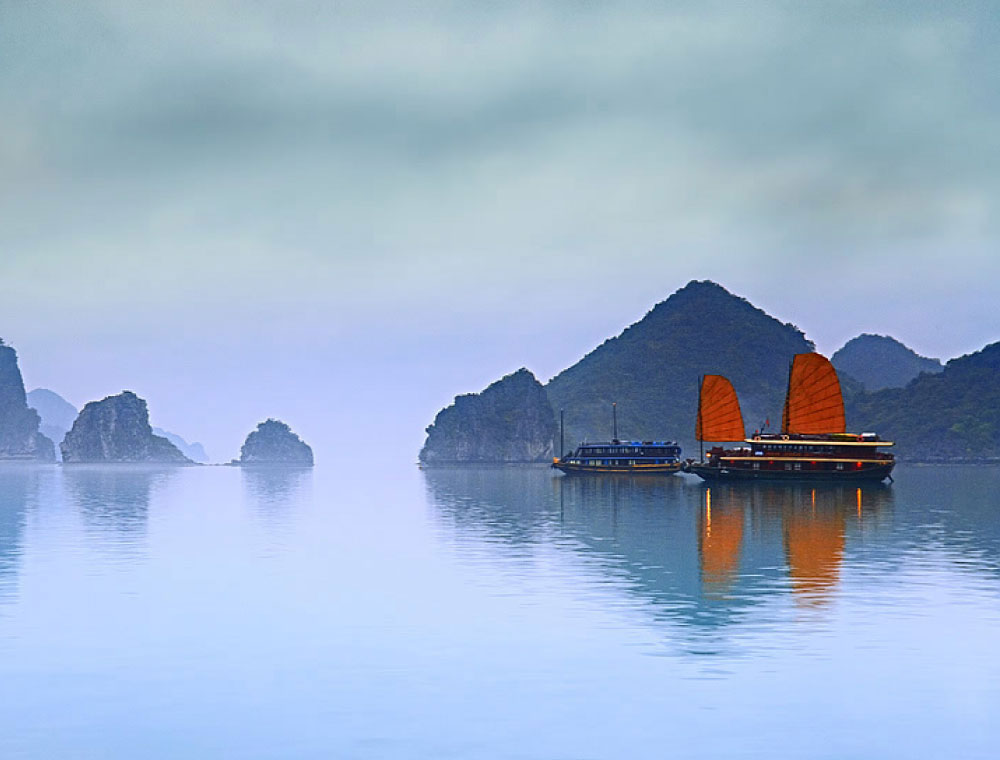VAN THUY TU - WHALE MUSEUM
The denizens of Phan Thiet have made their living for centuries off the sea. It was believed that in bad weather, whales would guide fishermen to safety, so a local practice arose over the years of paying homage to Mr. Whale, and a temple was built in his honor in 1762. Somewhere in the back of the temple is a glass box stuffed with various whale bones, but the real attraction is the 22-metre-long whale skeleton on display in a separate building alongside the temple. It’s well-mounted, impressively large, and worth a look.
FISHING HABOUR
Walking along the beach, you'll pass by fishermen sorting out their catch, ship-wharfs and, at the southern end of town, a section where clams have been ridded of their shells for many years.
DUC THANH SCHOOL
Duc Thanh School was built in 1907 by patriotic local scholars who hoped to recreate the success of the Hanoi Free School. It is located near the city market. Nguyen Trong Loi and Nguyen Quy Anh; sons of poet Nguyen Thong managed the school when Ho Chi Minh was present. In 1910, Nguyen Tat Thanh (later President Ho Chi Minh) stayed and taught Chinese, Vietnamese and martial arts to the second class at Duc Thanh School. Subjects at the school also included social and natural sciences, art and physical education.
MUI NE COASTLINE
Mui Ne is an eco-tourist site still in primitive appearance, about 22 km to the East of Phan Thiet City. It is the name of a coastal ward in Phan Thiet City. Visiting Mui Ne, visitors can walk under rows of coconut trees running along the beach with the blue sea on side and white sand dunes on the other.
POSHANU CHAM TOWERS
Set on a hill on the road to Mui Ne there are two towers known as the Poshanu Towers. Built by the Cham people in the late 8th century the ruins were dedicated to the Hindu god Shiva. Inside the main tower there is a Linga-Yoni altar.
THE WHITE SAND DUNES
The Bau Trang area has 3 lakes: Bau Ong (Gentleman Lake), Bau Ba (Lady Lake) which is the largest, and Bau Xoai (Mango Lake) which is the smallest, and several ponds. Bau Ba is 14.5 m at the deepest point and Bau Ong is 22 m deep. The two lakes have a combined water volume of 12,131,900 m3. The shallower ends of the lakes are covered in beautiful flowering lotuses, and thus the area is sometimes referred to as "Lotus Lake" by tour companies; further adding to the great confusion of so many names for the same area.
THE RECLINING BUDDHA & TA CU MOUNTAIN
Ta Cu Mountain is an extinct volcano. The pagoda built into its side dates from 1861 and houses Vietnam’s largest Buddha statue. The sleeping or lying Buddha is an impressive 49 meters long.
